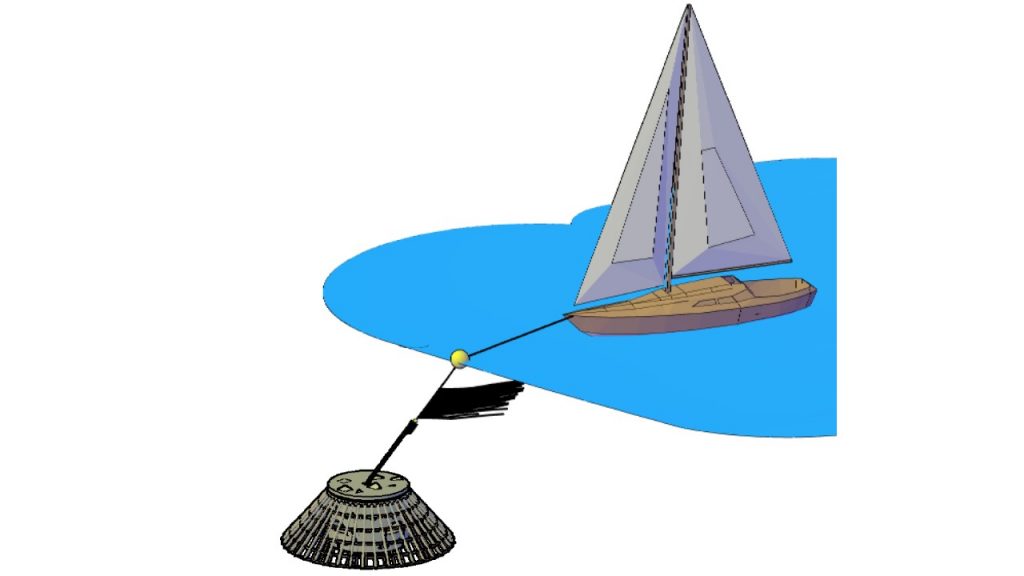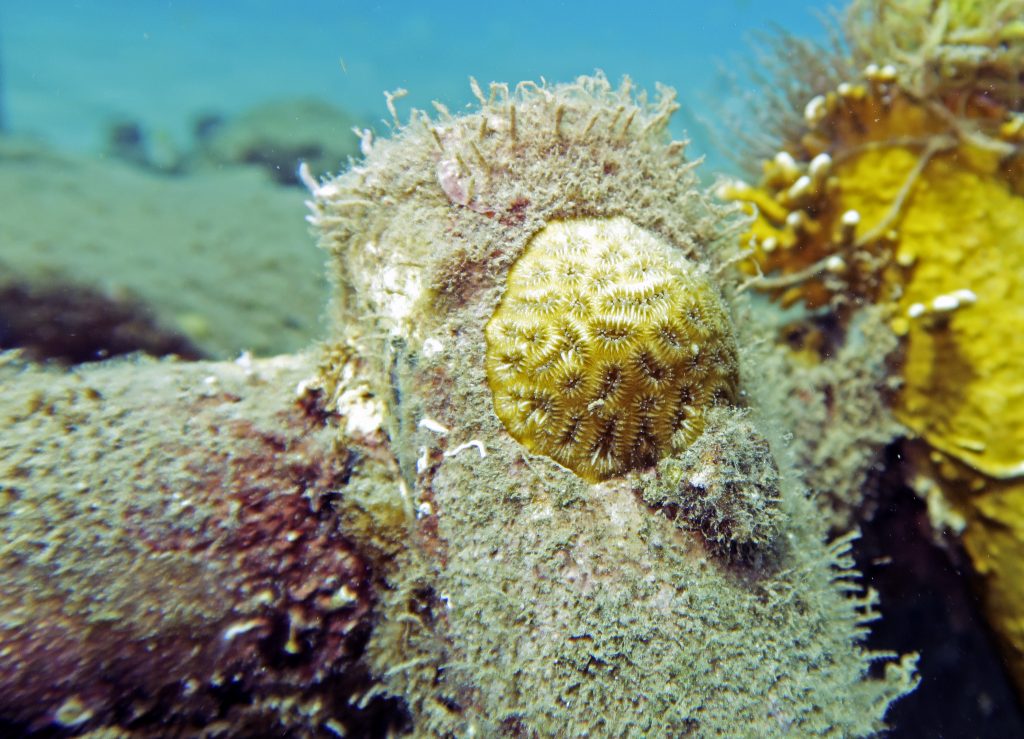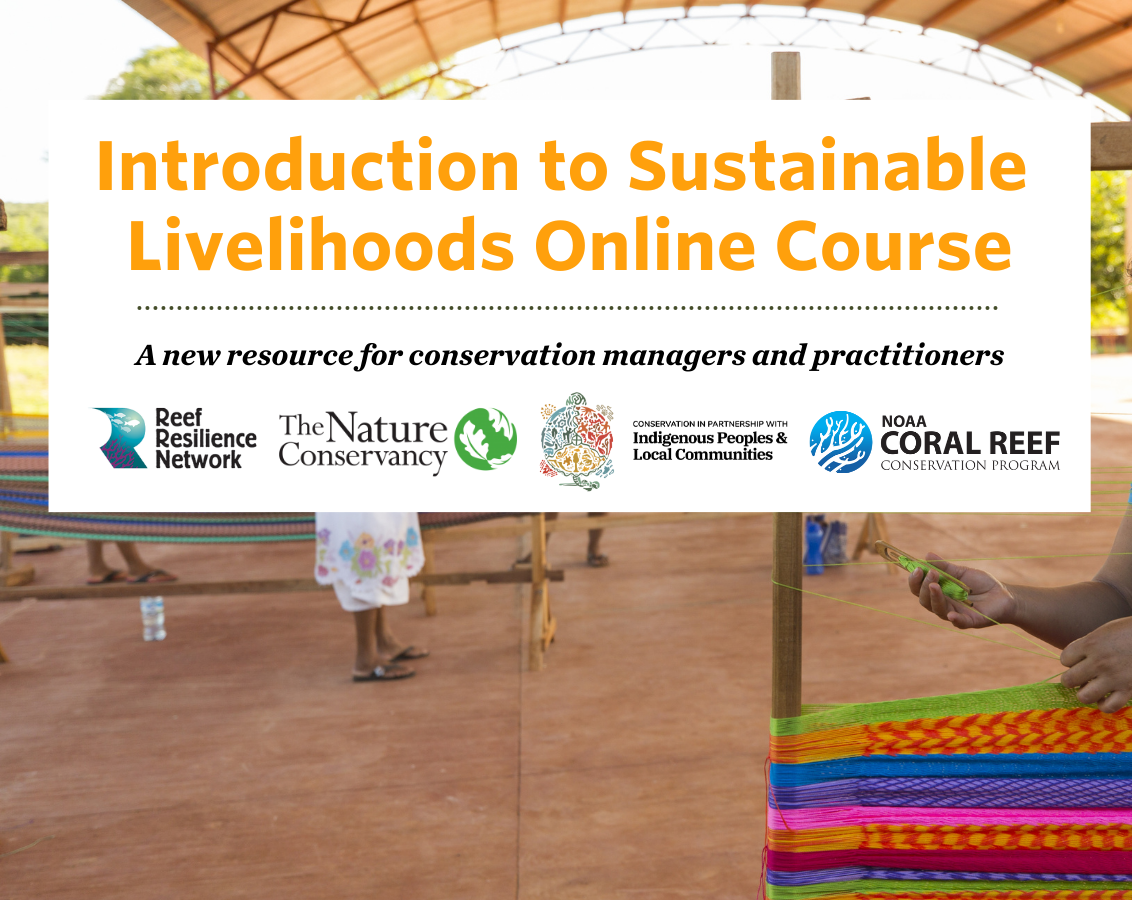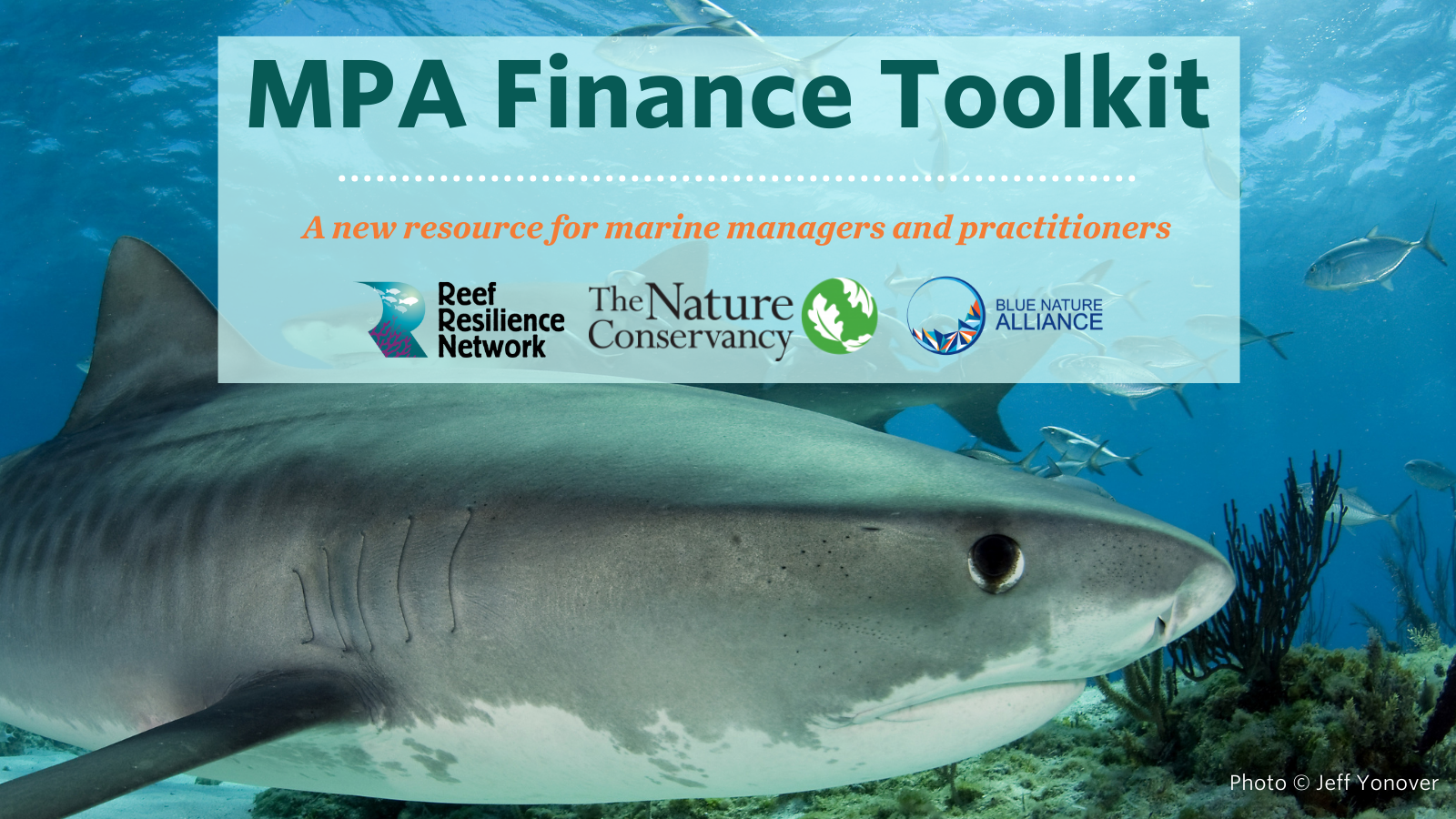Eco-designed Mooring Project
Location
The challenge
Our challenge was to design a new mooring system that would “kill two birds with one stone” by reducing the impacts, from boat anchors in coral reef and seagrass areas, and to enhance coral colonization and associated fauna. The new mooring system was to integrate an eco-design approach as a Nature Based Solution (NBS) which mimicked coral habitats and their ecological functions using methods of green engineering (Pioch et al. 2018).
Actions taken
First, protection actions were taken by prohibiting anchoring in the bay of Deshaies, and then eco-mooring devices were designed and implemented. A total of 40 mooring blocks were designed to attract coral larvae settlement. The blocks mimicked natural roughness, pits and the shape of small caves that could be found in surrounding coral reefs (see below). We also used four types of materials: metal, natural rocks (local basalt), low carbonate concrete (Hayek et al. 2020) and high-density polyethylene (HDPE) for marine aquaculture. As an NBS approach and eco-design construction (Pioch and Léocadie 2017), the size, orientation and aesthetic parameters were considered to enhance the ecosystem integration of this eco-mooring project.

The concept of eco-mooring to maintain safe boating or yachting tourism and effective coral substratum. Photo © S. Pioch
How successful has it been?

Mooring system with coral recruitment on a mangrove “skirt”. Photo © C. Bouchon
Lessons learned and recommendations
Design: Three different models were tested to assess the capacity of different concrete treatments and surface roughness to attract coral recruits. The “mangroves roots” design was by far the best for coral recruitment.
Storm resistance: The eco-mooring resisted (no destruction, scouring, nor displacement), and most of the settled corals survived the passage of the super hurricane Irma in 2017, and its 17 m high waves.
Funding summary
Regional environmental and development agency (SEMSAMAR; 50%), local community (city and county; 30%), European funding (20%). The cost of one eco-mooring was € 4,000 (US$4,320) with an expected durability of more than 50 years.
Lead organizations
Caraïbes Aqua Conseil consulting (CAC)
Partners
National Natural Park of Guadeloupe, fishermen, local diver’s shops, diving clubs and French Water Agency.
This case study was developed in collaboration with the United Nations Environment Programme (UNEP) and the International Coral Reef Initiative (ICRI) as part of the report Coral Reef Restoration as a Strategy to Improve Ecosystem Services: A Guide to Coral Restoration Methods.


